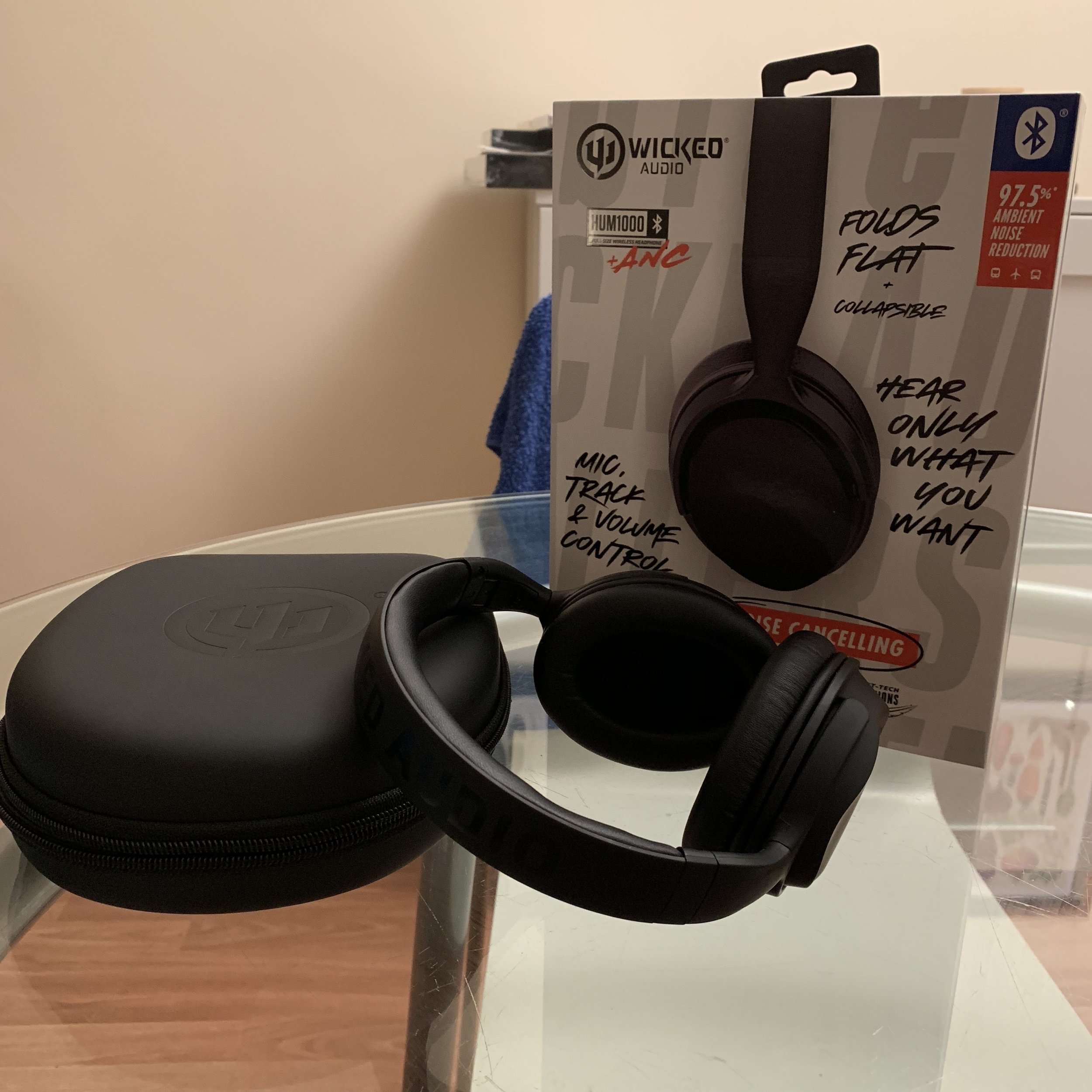Wicked Audio HUM 1000 Headphones Review
I’ve been on the hunt for a decent pair of Bluetooth headphones - pairing ultimate portability with stellar sound quality. Are Wicked Audio’s HUM 1000 Headphones what I’m looking for?
Living in Nottingham and within close proximity of the office, I am incredibly lucky to be able to have a walking commute. It allows me the time and headspace to process my tasks for the day and feel the brisk breeze on the back of my neck, activating the brain.
It also gives me a good chance to listen to podcasts and new albums, which make a good-yet-portable wireless audio setup (with an actually affordable price point…looking at you, Apple AirPods) a requirement. So far, my search hasn’t produced great results, with the issues being sketchy audio quality and nigh-on unusable microphone - it was clear they favoured portability with small earbuds.
In rebellion, I went to the opposite side of the spectrum for better audio quality. Enter Wicked Audio’s HUM 1000 noise cancelling headphones. At a smudge over $100 (just over £75), they aren’t cheap, but come packed with impressive tech specs to make the cost worthwhile on paper:
Noise Cancelling that actually works (especially in windier areas of Nottingham around the River Trent)
A 13.5 hour battery life (actually a reserved judgement - I got around 15 hours on one charge)
20-20,000 Hz frequency pumped out of 40mm drivers with 103dB sensitivity (translation - they should sound good)
But these are stats on the back of some mighty satisfying packaging. Are they any good in real world use?
The answer, like every other gadget you will ever own, is yes and no - a balance of strengths and weaknesses.
Audio in general is a check in the strength box. Playback is mixed in definite favour of bass, booming throughout the headphones and ever-so slightly overwhelms the mids and highs at times. But then again, that seems to be a preferred musical blend for many, from the mixing of songs to the audio equipment used to play them, so it’s not necessarily an issue.
The noise cancelling, as suggested above, actually works really well! I have used some headphones touting this same technology in the past, which only really do a half job of cancellation, usually because of poor fitting in/on my ears. The HUM 1000s worked incredibly well to produce the sound of complete silence, given the incredibly windy situations where they were tested.
For the microphone, this is a hit-and-miss affair. When it comes to microphones built into the can of a headphone, this one works better than most. But the placement at the bottom of the left headphone leaves it victim to any breezes, which at this distance from your mouth makes it impossible to be heard.
A case does not make a pair of headphones ultra-portable.
And then we come to my main gripe - the wearability and portability. If you have to carry your headphones around in a case or limit your neck movement by wearing them around your neck, I would argue they are not actually that portable. Plus, as over-ear headphones, it’s impossible to wear any kind of glasses with them on - driving the arms of said spectacles into the side of your skull and causing some pain.
So, what is the final opinion? Well, they’re good headphones. Decent audio quality, comfortable to wear, easy-to-use interface of buttons, a microphone that works for calls half of the time. But in going for these, you’re giving up that sense of ultra-portability that, to me as a walking commuter, is pretty important.
A nice set of headphones for the backpack, perhaps? 7/10







